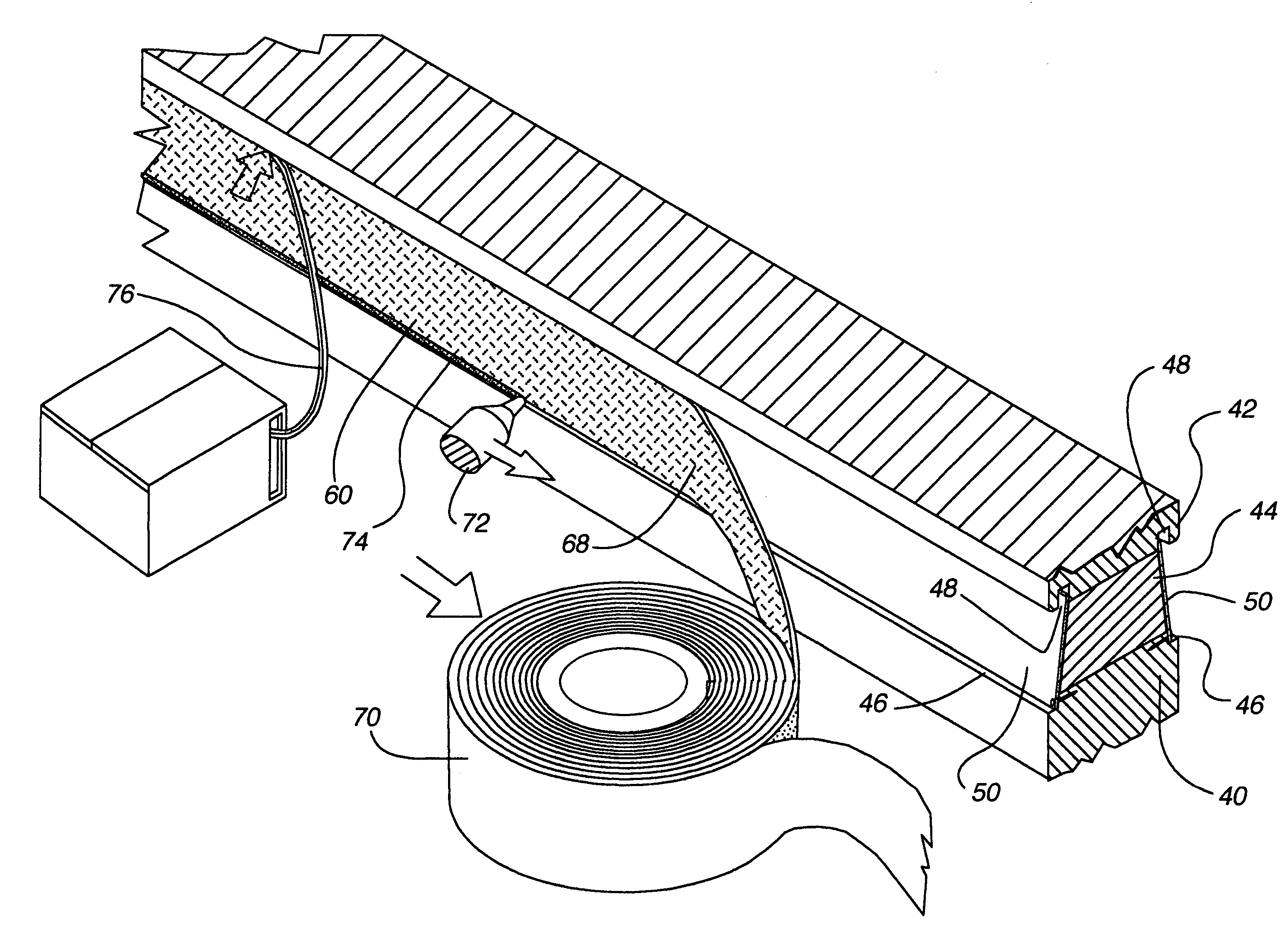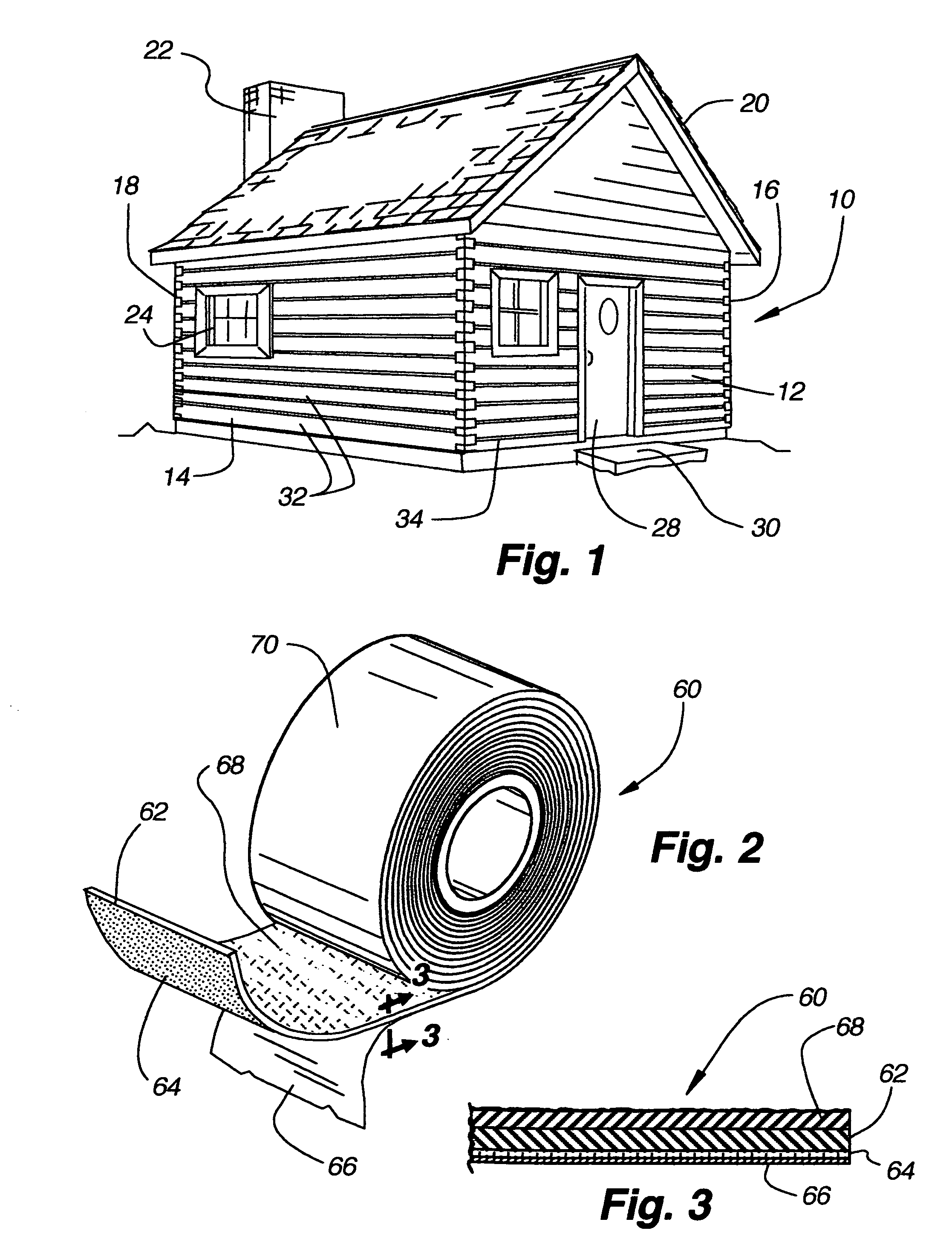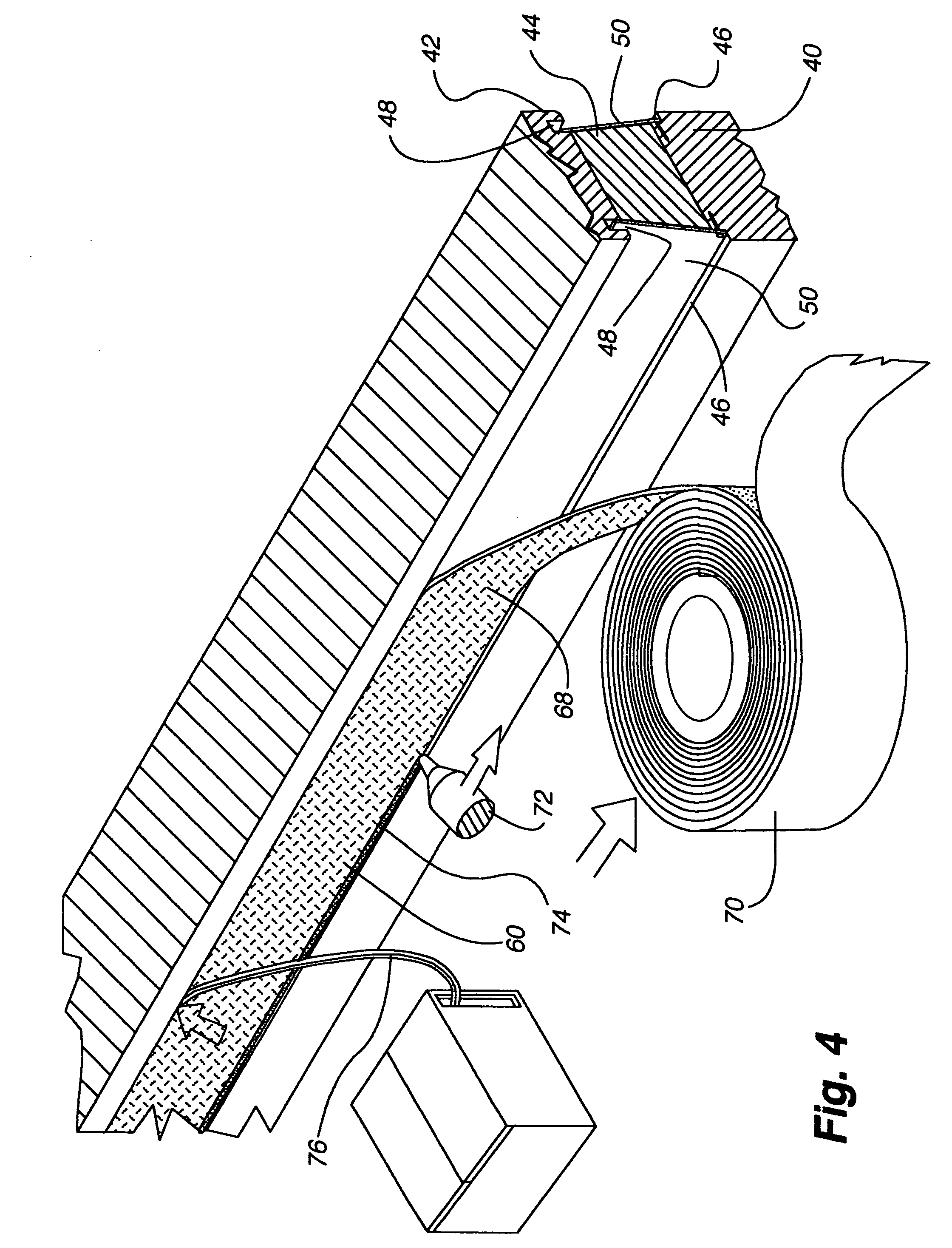Chinking tape for log structures
a technology for chinking tape and log structures, applied in the direction of film/foil adhesives, building roofs, transportation and packaging, etc., can solve the problems of affecting the effect of chinking, and affecting the installation process, so as to achieve convenient and fast method of applying chinking material, easy installation, and easy handling of the package
- Summary
- Abstract
- Description
- Claims
- Application Information
AI Technical Summary
Benefits of technology
Problems solved by technology
Method used
Image
Examples
Embodiment Construction
[0044]Turning now to the drawings, FIG. 1 shows a log structure, such as a home 10 having a front wall 12, side walls 14, 16 and rear wall 18. Roof 20 is provided to enclose the structure 10 and to make it inhabitable. A chimney 22 along with windows 24, 26, door 28 and porch 30 can also be provided. Individual logs 32 are used in forming the front wall 12, rear wall 18 and side walls 14, 16. These logs are stacked on top of each other in a horizontal position with the corners overlapping, usually with a dovetail configuration so that the logs will interfit and lock into position. A gap or space called a chink 34 is found between the adjacent logs. It is necessary to seal the chink to prevent the passage of air, contaminants and weather elements and to seal the structure to make it livable and comfortable.
[0045]It is to be understood that the present invention can apply to any type of log structure whether it uses round logs, or sawed or hewed logs which usually have a rectangular c...
PUM
| Property | Measurement | Unit |
|---|---|---|
| Length | aaaaa | aaaaa |
| Flexibility | aaaaa | aaaaa |
| Adhesivity | aaaaa | aaaaa |
Abstract
Description
Claims
Application Information
 Login to View More
Login to View More - R&D
- Intellectual Property
- Life Sciences
- Materials
- Tech Scout
- Unparalleled Data Quality
- Higher Quality Content
- 60% Fewer Hallucinations
Browse by: Latest US Patents, China's latest patents, Technical Efficacy Thesaurus, Application Domain, Technology Topic, Popular Technical Reports.
© 2025 PatSnap. All rights reserved.Legal|Privacy policy|Modern Slavery Act Transparency Statement|Sitemap|About US| Contact US: help@patsnap.com



